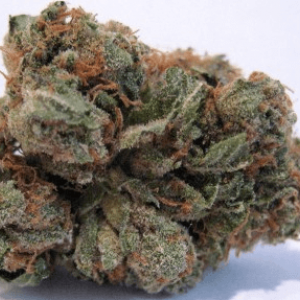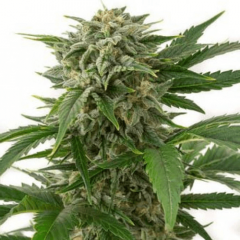Genetics of Cannabis Kush
The name Kush cannabis itself comes from the Hindu Kush mountain range in Afghanistan, Pakistan, and India. The region has harsh weather conditions and rugged terrain. Unique local varieties of cannabis grow here, which later became known as Kush. It comes from plants that are adapted to survive in the difficult conditions of the Hindu Kush. This made them very powerful and resistant to adverse and extreme conditions. The high quality of Kush strains has made them one of the most valuable and popular varieties. Kush is synonymous with premium cannabis.
Some of the more well-known strains include OG Kush, Bubba Kush and Purple Kush. They are characterized by a high THC content and often have a sedative effect. Today, Kush continues to be the crown jewel of cannabis strains. Its rich history makes it an important part of the cannabis industry and culture around the world.
Features of the genetics of Kush cannabis
Kush genetics are unique and highly prized for their excellent characteristics. The bushes are low and have abundant branching. This makes them ideal for growing indoors. The varieties are known for their abundant resin content, dense leaves and buds, resulting in high cannabinoid and terpene content. Typically, these varieties have a rich, earthy, pine aroma with lemon and woody notes. This makes the taste unique and memorable. The relatively short flowering phase allows for outdoor cultivation in cool mid-latitudes, and several harvests per year indoors. The powerful effects and long-lasting effects make varieties of this genetics very popular among cannabis lovers. The finished product can be used for both recreational and medical purposes.
Phenotypes of Cannabis Kush
Kush phenotypes can vary significantly, reflecting the variety of conditions in which they are grown. Lighting, temperature and humidity can significantly affect performance. Phenotypic plasticity allows adaptation to different conditions. Breeders often work to maintain and improve certain phenotypes. Plants with the best characteristics are selected for further propagation.
Cultivation of Cannabis Kush
The process requires attention to detail and knowledge of the characteristics of the variety:
- Kush prefers a dry, warm climate similar to that found in the Hindu Kush region.
- The soil should be rich in organic matter and have good drainage.
- Plants require regular and moderate watering. Excess water can cause the roots to rot. Fertilizers must be balanced.
- Pruning helps control the growth and shape of plants. Improves air flow and sufficient lighting of lower branches. LST (Low Stress Training) or SCROG (Screen of Green) techniques are used.
- It is important to regularly check plants for pests and diseases.
- Harvest time depends on the phenotype and growing conditions. Kush usually matures 7-9 weeks after flowering begins.
These actions will help grow healthy and strong plants that will produce a high-quality harvest.












